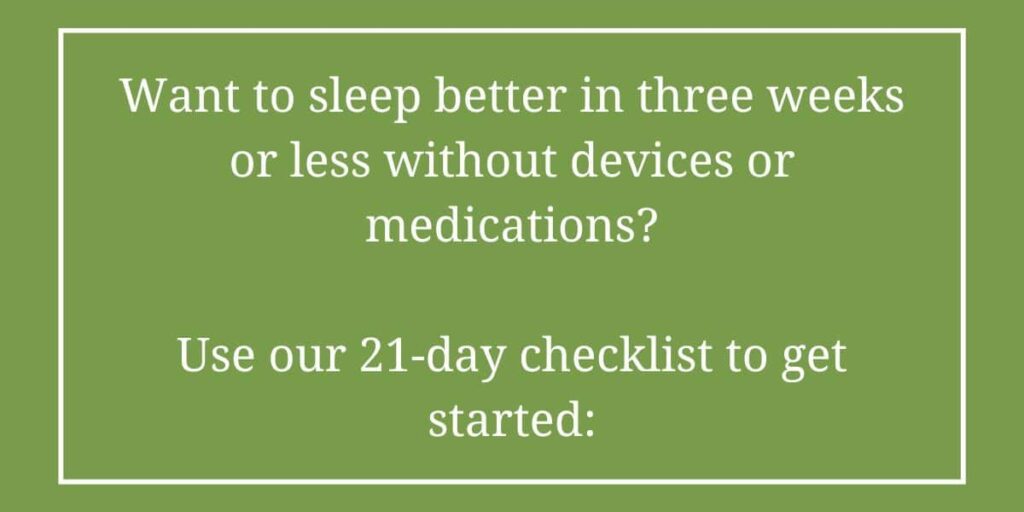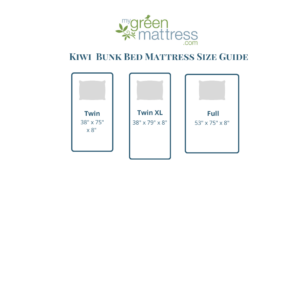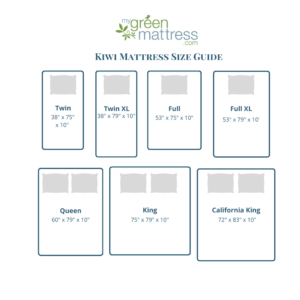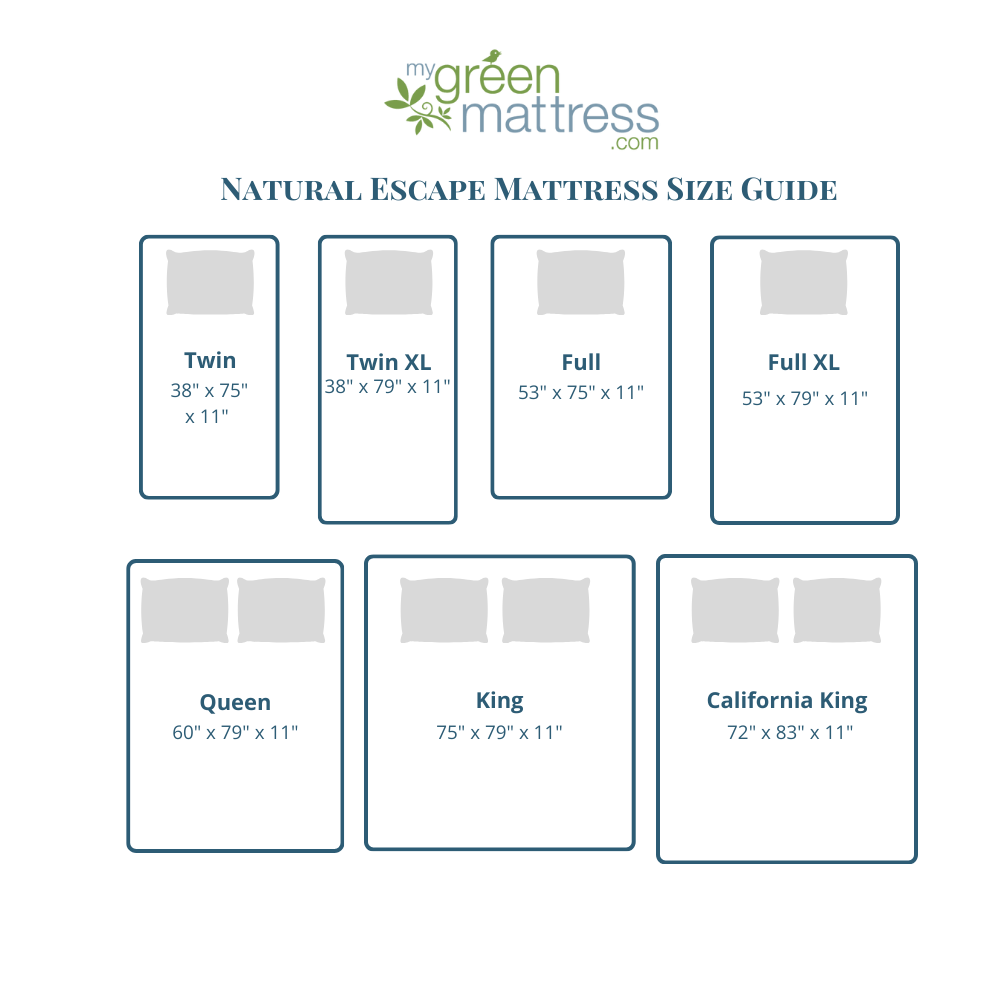Living an eco-friendly life has gone from being a fringe perspective to a mainstream effort. More than three in four Americans and Australians want to learn how to live more sustainably and even COVID-19 prompted as much as two thirds of Americans to adopt more eco-friendly habits.
But what’s it like to actually respect the Earth and its abundant resources? Learning how to live eco-friendly must shift from just wanting to do better to making real lifestyle changes.
We wanted to learn what such action steps look like, so we dove into eco-minded lifestyle changes just about anyone can make. Keep reading to discover simple tips you can employ within a couple days, some even right now.
How to Live Eco-Friendly
Living eco-friendly is something anyone can enjoy the rewards of, as long as they’re invested in making changes. Leading a greener lifestyle has financial, emotional, physical, and mental benefits of all kinds.
To make a noticeable difference in your life, it’s wise to take measured action. Here are concrete action steps you can take to start living more eco-friendly:
- Identify your core values. Living more eco-friendly is not about being perfect or agreeing with everything but about choosing your values and living by them. Do you identify with making water consumption cleaner, reducing reliance on gas-powered transportation, donating more used goods, or reducing consumer waste? Perhaps you love all of the above. No matter what your eco-friendly lifestyle goals are, pick one to three priorities and place the majority of your effort on them. You’ll be able to focus and have more meaningful outcomes.
- Determine what’s within your budget. Some environmentally-conscious lifestyle changes require you to make an investment, such as buying a water filter or solar panels. You don’t need to buy everything that will make your life greener, and in fact, this is counterproductive to minimizing reliance on purchased goods. Look at your current monthly budget and decide what your disposable income allows. Use what you feel comfortable spending to invest in an item or two that will reduce your total annual waste.
- Focus on consistency rather than volume or speed. Being motivated to make significant lifestyle shifts is also when it’s easiest to discover just how much needs to change. While this is exciting, you may feel overwhelmed by all of the work you can do. Rather than trying to change your diet, purchasing habits, wardrobe, and everything else immediately, focus on executing one change well. If you’re eating fewer animal products, focus on the month ahead of you. If you’re buying clothes with less environmental impact, focus on one one meaningful change for your next piece of clothing. Baby steps win the day.
- Read about eco-minded lifestyle changes on a regular basis. The means of an environmentally-sound lifestyle are always changing and becoming more practical. A great way to elevate your green lifestyle is to pick one or two vetted publications and read them often. This builds your total knowledge of the green space without lots of extra research just to find action steps. Our blog is a great place to start!

How to Live an Eco-Friendly Lifestyle
Living a real eco-friendly lifestyle goes beyond buying a grocery tote bag and merchandise with cool messages. In fact, much of an Earth-minded lifestyle comes down to purchasing less in a variety of consumer categories.
Leading an eco-friendly life is easier than ever because there are so many ways to make a real difference. Here are some of the best strategies to use when learning how to live an eco-friendly lifestyle:
Dine at Home More Frequently
North America produces 168 million tons of food waste every year, and unfortunately that number isn’t shrinking quickly enough. You, your partner, and/or your family can be part of the solution by dining at home more often.
The typical American individual wastes 40% of their food when dining out, but only three percent when dining in. Talk about a startling statistic! Imagine paying around $20 for a meal and not eating close to half of it. That’s like putting $8 in the garbage can each time you go to a restaurant.
Eating at home is economically sound from the get-go. Wellio researchers found that home-cooked meals are one fifth the cost of eating out and one third the cost of a meal kit.
You can minimize your food waste by making meal plans ahead of time, eating at home most nights, and saving the leftovers. This keeps your budget in order and ensures as little possible food is going into the trash or compost bin.

Drink Filtered Water from the Tap
60 million plastic water bottles are thrown out each day in the United States. That’s roughly one every 17 people in the US!
In a world where (thankfully) many people have access to clean drinking water, there’s no longer an excuse to use plastic water bottles. One of the only times to justify drinking bottled water is if you’re traveling to a country with known contaminants in the local water supply.
Outside of such circumstances, drink filtered water from your tap at home and work. Water filters are more affordable than they’ve ever been and you can find honest ones for only a few hundred dollars. That’s a small upfront cost to pay for clean water both now and years into the future.
Turn Electronics Off When Not In Use
As much as humanity loves its electricity, excess use of it can place a large burden on the environment. Significant resources are needed to produce the electricity most urban and suburban consumers enjoy as part of daily life.
To reduce your reliance on electronics, simply turn them off when not in use. This includes kitchen lights, TVs, porch lights, and other appliances. Monitor your use of them and try to use each device only when it’s needed.
Buy Only What You Need
It’s a sad reality that Americans waste anywhere from 32% to 50% of the food created for the end consumer. This is a large amount and demonstrates that unfortunately, most American consumers are indiscriminate when going to the stores.
Buying only what you need is a great principle not just for food but for everything in your life. Do you need two loaves of bread or just one? Do you need three brand new shirts or just one to replace the old one you’re donating?
Thinking critically and honestly about your consumer needs isn’t always fun, but it’s one of the simplest paths towards meaningful consumption and less waste. If you have a spouse, partner, or family to consider, share this decision making process with them, too.
Donate or Upcycle Your Used Goods
The average US consumer throws out almost 82 pounds of clothing each year, leading to 85% of all textiles being wasted annually. That’s an enormous amount and this doesn’t have to be the case.
The best way to prevent this is simply donating your used clothes. Find an organization or non-profit near you that accepts lightly used clothing and bring them a box of your used clothes. This is the perfect way to reduce annual waste, keep the Earth cleaner, and help individuals in need at the same time.
Buy Used Goods Whenever Possible
If you want to go one step further, buy used goods whenever you can. This applies to everything from cars and electronics to clothing and kitchenware.
If you’re buying used clothing or furniture, always ask questions about the items’ origins. You want to know what kind of condition(s) they came from so you can make an informed buying decision. Always clean furniture and wash clothes if you’re buying second-hand to ensure its cleanliness for your use.
How to Live More Eco-Friendly
Ready to go all out and lead as green a lifestyle as possible? That’s good news because there are dozens more ways to live out your stewardship of the Earth.
Here are several more impactful ways you can live more eco-friendly:
Reduce or Eliminate Your Consumption of Animal Products
Reducing your reliance on animal products in daily life is one of the best ways to go green. Switching to a primarily plant-based diet can save 14 times the amount of water, 17 times the amount of land, and hundreds more plant and animal species compared to a meat-based diet.
That said, dietary changes can be some of the most intimidating for those new to it. Here are some tips to make the transition easier:
- Focus on one change at a time. Trying to change multiple meals at a time is overwhelming and often just leads to retreating to your comfort zone. Pick one part of your meals to change, like adding mushrooms or squash to your pasta dish instead of meat.
- Look for vegetarian or vegan versions of your favorite meals. The simplest way to make the foreign familiar is replacing meat-based dishes for plant-based variations. There are thousands of mouth-watering, Earth-friendly recipes out there that make use of plants in ingenious ways.
- Match a plant or recipe to the nutritional equivalent of what you’re eating now. Many people give up dietary changes because they’re unfamiliar with how easy it is to meet your nutritional needs on a plant-based diet. Commit some time to reading about what foods you can get specific macro and micronutrients from so you’re eating nutritionally balanced meals.
Purchase Products With Less Packaging
Product packaging and containers turn into 82 million tons of waste annually in the United States alone. That’s a serious amount of garbage from otherwise useful, sometimes necessary products.
Below are a few ways to buy goods with less packaging:
- Buy products from brands with fully recyclable or biodegradable packaging, like cardboard or plastic made from plant matter
- Find brands that openly state they minimize their packaging needs
- Look for products and brands that fill up as much of the packaging as possible (so it’s maximally efficient)
- Before buying something, ask yourself if you can buy it in a store or from a local provider
- Use the minimum amount of packaging / bagging / supplies when checking out at a store
Reduce Your Reliance on Single-Use Items
Single-use food-related products like cutlery, straws, paper plates, and napkins only add to environmental and total waste. By reducing or eliminating your use of such products, you’ll have less trash every month and more space for reusable goods and kitchenware.
Here are some of the most effective ways to reduce your reliance on single-use products:
- Prioritize long-term kitchen products. Ceramic plates, glass cups, and real silverware is always the best approach when it’s available. While these need to be cleaned or put in a dishwasher after, it’s a smaller total burden on the environment.
- Limit your use of them to large gatherings only. If you enjoy entertaining or otherwise host people frequently, there are a lot of dishes to clean up afterwards. This incentivizes many people to buy single-use flatware and cutlery, but this also produces a lot of waste. Strive to limit your use of paper plates and related cutlery to gatherings of 16 or more.
- Purchase biodegradable variations. If you’re going to buy disposable cutlery and flatware, why not purchase eco-friendly versions? Dozens of brands now make 100% compostable cutlery and plates made out of bamboo, cornstarch, or fallen palm leaves. These products give you the convenience of disposable goods with the ethical standards of eco-minded products.

How to Live Eco-Friendly on a Budget
Want to do your part for the Earth, but have a strict budget to stay on? Here are our top recommendations on how live eco-friendly on a budget:
- Consider rechargeable batteries. American consumers buy about 3 billion batteries every year but only five percent of them are recycled annually (about 150 million). Most rechargeable batteries work great, you just need to invest in them and charge them regularly. Purchase one set of each battery type you use regularly and watch those savings pile up.
- Put your thermostat on a schedule. Every time you use heating or cooling in your home, it becomes part of your energy bill. The more often you use your utilities, the more you’re paying and the more energy you’re utilizing. Utility companies have to leverage many resources to produce usable energy, and cutting back here benefits both the Earth and your pocketbook.
- Buy one or two reusable bags. Yes, reusable bags do cost a bit, but they’re much better than constantly using paper and plastic bags. Find a brand that donates a portion of its profits to a cause you stand behind and buy one of their bags. You’re reducing plastic use, keeping things budget friendly, and supporting valuable initiatives with one decision.
- Use the cold water washing machine setting. Contrary to popular belief, cold water is just as effective at washing clothes as warm water. You may have grown up being taught warm water has benefits, but this simply isn’t the case. Cold water requires less energy and you can put your clothes in a single washer load, thereby reducing your total water use.
- Go paperless where possible. Opting in to paperless billing, saving documents on your computer, and sending emails instead of letters are all great ways to reduce your reliance on paper. You’ll be supporting the Earth while having less paper junk at home.
How to Live Eco-Friendly In an Apartment
If you live in an apartment, chances are you’ve looked for ways to live in an Earth-conscious manner despite housing-related limitations. We’re glad you’re reading this blog post, because there are tons of ways to live eco-friendly in an apartment.
Here are some of the best you can implement almost immediately:
- Recycle and compost when possible. Many apartment complexes don’t offer recycling service due to the cost involved and not wanting to pass that cost to their tenants. If your complex offers this, definitely take advantage of it. If it’s not available, research local recycling facilities and set one time weekly to drop off eligible goods.
- Insulate your doors and windows. If you haven’t looked into it before, you’d be surprised by how much energy can leak out of poorly insulated areas in your place. Windows and doors are two primary energy leak sources that you can fix quickly and affordably. You can use plastic around single-pane window frames and draft blockers for doors to keep it cooler in the summer and warmer in the winter.
- Make environmentally-friendly upgrades. If you have the budget to do so, there are tons of changes you can make that lead to a real difference. Consider buying Energy Star-certified appliances, replacing halogen bulbs for LED ones, using a ceiling fan instead of air conditioning (when possible), and only using your dishwasher when it’s full. These are small actions in the short term but lead to major energy savings and environmental improvements after a few months.
Frequently Asked Questions About Eco-Friendly Lifestyle Tips
As you’ve seen by now, living an eco-friendly lifestyle is a never-ending rabbit hole of how humans interact with the Earth and its resources. This is what makes it so exciting but also so overwhelming at times.
Chances are you have more questions about the most effective ways to live green without making large or ongoing financial investments. Check out these related frequently asked questions about the same ideas and our answers to them:
How Do I Start An Eco Lifestyle?
Starting an eco-friendly lifestyle is much easier than it’s ever been. There are hundreds of individual actions you can take, but it’s more effective to focus on simple changes first. Once you have the basics down, you can progress to deeper lifestyle changes and larger financial investments. Here are the easiest ways to start an eco lifestyle:
- Switch to renewable solutions like energy-efficient lighting and reusable bags
- Shop local whenever possible to reduce reliance on packaged eCommerce goods
- Switch from plastic cutlery and paper flatware to glasses, plates, and bowls
- Buy previously owned clothing from boutique shops
How Can I Go Green at Home?
Going green at home is one of the best ways to lead an Earth-minded lifestyle. There are plenty of actions you can take, including the following:
- Use as many natural energy sources as possible (solar panels and generators)
- Compost your food waste if possible
- Invest in a proven water filter and drink your tap water from it
- Freeze or refrigerate leftovers
What Do You Avoid to Be Eco-Friendly?
Just like an Earth-minded lifestyle includes adopting new habits, it also includes saying no to specific things. Here are a few things to avoid to live the most eco-friendly life possible:
- Printing paper bills, forms, and tickets
- Taking public transportation (resource-intensive)
- Using plastic or paper bags instead of canvas or cotton bags
Want to make your bedroom as Earth-friendly as possible? We create the best organic hybrid mattresses that are affordable and help you reduce your total carbon footprint. Shop our mattresses now, or check out our latex pillows and organic sheets for even more sleep time goodies. Contact us if you have any questions!












